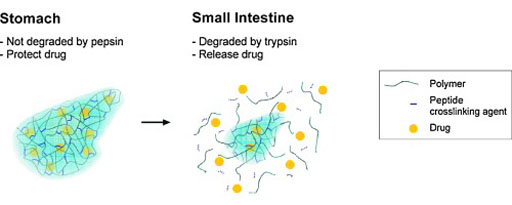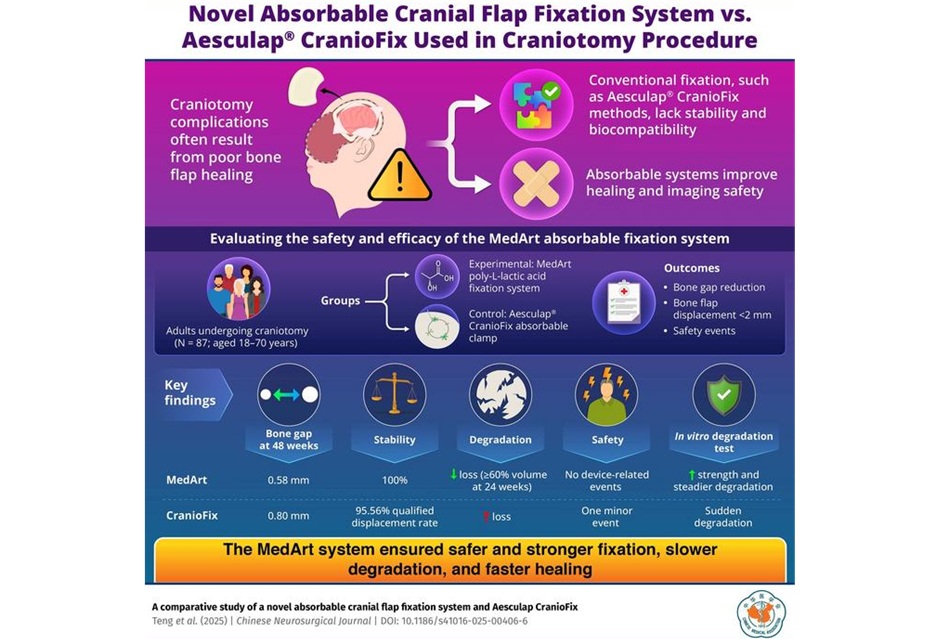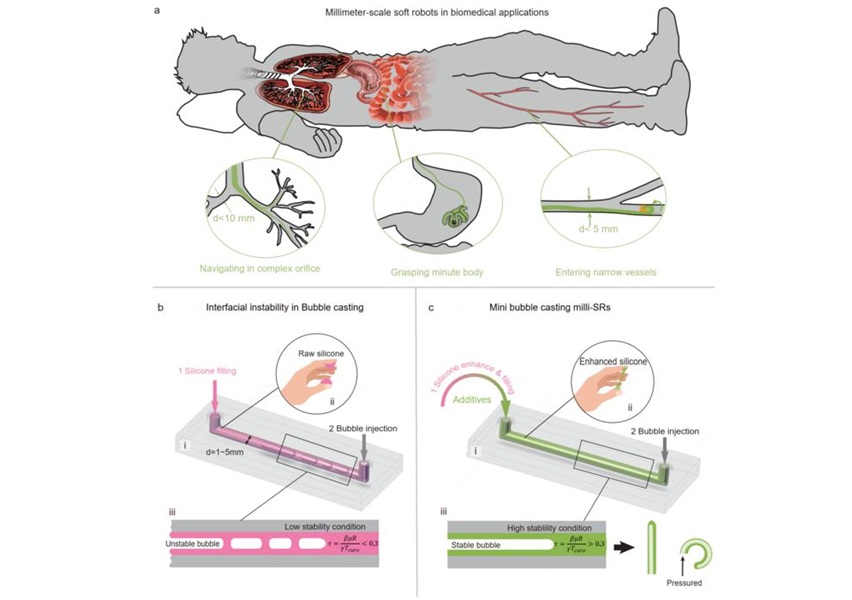Breakthrough Biodegradable Capsule Aids Hemophilia Treatment
|
By Daniel Beris Posted on 13 Dec 2016 |

Image: A hemophilia capsule only degrades in the small intestine (Photo courtesy of UT Austin).
A new study describes how an innovative biodegradable capsule that uses hydrophilic carriers for oral delivery of hematological factor IX (hFIX) can treat hemophilia B.
Developed by researchers at the University of Texas (UT; Austin, USA), the oral delivery system is based on a pH-responsive polymer hydrogel microcarrier system that carries the prophylactic hFIX particles. The poly (methacrylic acid)-grafted-poly(ethylene glycol) [P(MAA-g-EG)] polymer, synthesized using ultraviolet (UV) polymerization, is subsequently joined with an enzymatically degradable peptide crosslinking agent that allows for site-specific degradation (by trypsin) in the small intestine.
As it moves through the body, the particle-containing capsule resists the major gastric enzyme in order to remain intact while in the stomach, protecting the encapsulated drug. When in the small intestine, the capsule begins to swell with the increase in pH, and is subsequently degraded by the minor intestinal enzyme, slowly releasing the drug over time. In study models, the system successfully transported hFIX, and was able to deliver adequate levels of the drug to the target site in the small intestine. The study was published on November 15, 2016, in the International Journal of Pharmaceutics.
“While an oral delivery platform will be beneficial to all hemophilia B patients, patients in developing countries will benefit the most,” said lead author Sarena Horava, PhD, of the UT Cockrell School of Engineering. “In many developing countries, the median life expectancy for hemophilia patients is 11 years due to the lack of access to treatment, but our new oral delivery of factor IX can now overcome these issues and improve the worldwide use of this therapy.”
Hemophilia B is a blood clotting disorder caused by a mutation of the factor IX gene, leading to a deficiency of factor IX. It is the second-most common form of hemophilia, and is sometimes called Christmas disease, after Stephen Christmas, the first patient described with the affliction. Presentation of hemophilia B is consistent with easy bruising, urinary tract bleed, and nosebleeds. Current protein replacement therapies rely on intravenous (IV) injections and infusions.
Related Links:
University of Texas
Developed by researchers at the University of Texas (UT; Austin, USA), the oral delivery system is based on a pH-responsive polymer hydrogel microcarrier system that carries the prophylactic hFIX particles. The poly (methacrylic acid)-grafted-poly(ethylene glycol) [P(MAA-g-EG)] polymer, synthesized using ultraviolet (UV) polymerization, is subsequently joined with an enzymatically degradable peptide crosslinking agent that allows for site-specific degradation (by trypsin) in the small intestine.
As it moves through the body, the particle-containing capsule resists the major gastric enzyme in order to remain intact while in the stomach, protecting the encapsulated drug. When in the small intestine, the capsule begins to swell with the increase in pH, and is subsequently degraded by the minor intestinal enzyme, slowly releasing the drug over time. In study models, the system successfully transported hFIX, and was able to deliver adequate levels of the drug to the target site in the small intestine. The study was published on November 15, 2016, in the International Journal of Pharmaceutics.
“While an oral delivery platform will be beneficial to all hemophilia B patients, patients in developing countries will benefit the most,” said lead author Sarena Horava, PhD, of the UT Cockrell School of Engineering. “In many developing countries, the median life expectancy for hemophilia patients is 11 years due to the lack of access to treatment, but our new oral delivery of factor IX can now overcome these issues and improve the worldwide use of this therapy.”
Hemophilia B is a blood clotting disorder caused by a mutation of the factor IX gene, leading to a deficiency of factor IX. It is the second-most common form of hemophilia, and is sometimes called Christmas disease, after Stephen Christmas, the first patient described with the affliction. Presentation of hemophilia B is consistent with easy bruising, urinary tract bleed, and nosebleeds. Current protein replacement therapies rely on intravenous (IV) injections and infusions.
Related Links:
University of Texas
Latest Critical Care News
- Coronary Artery Stenosis Could Protect Patients from Pulmonary Embolism Effects
- Sweat-Powered Sticker Turns Drinking Cup into Health Sensor
- Skin-Mounted 3D Microfluidic Device Analyzes Sweat for Real-Time Health Assessment
- New Therapeutic Brain Implants to Eliminate Need for Surgery
- Stem Cell Patch Gently Heals Damaged Hearts Without Open-Heart Surgery
- Biomaterial Vaccines to Make Implanted Orthopedic Devices Safer
- Deep Learning Model Predicts Sepsis Patients Likely to Benefit from Steroid Treatment
- Programmable Drug-Delivery Patch Promotes Healing and Regrowth After Heart Attack
- Breakthrough Ultrasound Technology Measures Blood Viscosity in Real Time
- Magnetically Activated Microscopic Robotic Swarms Could Deliver Medicine Inside Body
- Frequent ECG Use Can Identify Young People at Risk of Cardiac Arrest
- Ultrasound Controlled Artificial Muscles Pave Way for Soft Robots
- AI-Powered Alerts Reduce Kidney Complications After Heart Surgery
- Algorithm Predicts and Lengthens Pacemaker Battery Life
- Novel Pill Could Mimic Health Benefits of Bariatric Surgery
- AI Models Identify Patient Groups at Risk of Being Mistreated in Hospital ED
Channels
Surgical Techniques
view channel
Drug-Coated Balloons Can Replace Stents Even in Larger Coronary Arteries
Narrowed or blocked arteries pose a major global health burden, often leading to heart attacks, heart failure, or stroke when blood flow becomes compromised. Traditional balloon angioplasty can reopen... Read more
Magnetic Kidney Stone Retrieval Device Outperforms Ureteroscopic Laser Lithotripsy
Kidney stone disease affects millions worldwide and often requires ureteroscopic laser lithotripsy, yet fragment removal remains inefficient. Many patients are left with residual pieces that can cause... Read more
Absorbable Skull Device Could Replace Traditional Metal Implants Used After Brain Surgery
Closing the skull safely after neurosurgery remains a major clinical challenge, as traditional metal or semi-absorbable fixation devices can interfere with imaging, degrade unpredictably, or persist long... Read morePatient Care
view channel
Revolutionary Automatic IV-Line Flushing Device to Enhance Infusion Care
More than 80% of in-hospital patients receive intravenous (IV) therapy. Every dose of IV medicine delivered in a small volume (<250 mL) infusion bag should be followed by subsequent flushing to ensure... Read more
VR Training Tool Combats Contamination of Portable Medical Equipment
Healthcare-associated infections (HAIs) impact one in every 31 patients, cause nearly 100,000 deaths each year, and cost USD 28.4 billion in direct medical expenses. Notably, up to 75% of these infections... Read more
Portable Biosensor Platform to Reduce Hospital-Acquired Infections
Approximately 4 million patients in the European Union acquire healthcare-associated infections (HAIs) or nosocomial infections each year, with around 37,000 deaths directly resulting from these infections,... Read moreFirst-Of-Its-Kind Portable Germicidal Light Technology Disinfects High-Touch Clinical Surfaces in Seconds
Reducing healthcare-acquired infections (HAIs) remains a pressing issue within global healthcare systems. In the United States alone, 1.7 million patients contract HAIs annually, leading to approximately... Read moreHealth IT
view channel
Printable Molecule-Selective Nanoparticles Enable Mass Production of Wearable Biosensors
The future of medicine is likely to focus on the personalization of healthcare—understanding exactly what an individual requires and delivering the appropriate combination of nutrients, metabolites, and... Read moreBusiness
view channel
Philips and Masimo Partner to Advance Patient Monitoring Measurement Technologies
Royal Philips (Amsterdam, Netherlands) and Masimo (Irvine, California, USA) have renewed their multi-year strategic collaboration, combining Philips’ expertise in patient monitoring with Masimo’s noninvasive... Read more
B. Braun Acquires Digital Microsurgery Company True Digital Surgery
The high-end microsurgery market in neurosurgery, spine, and ENT is undergoing a significant transformation. Traditional analog microscopes are giving way to digital exoscopes, which provide improved visualization,... Read more
CMEF 2025 to Promote Holistic and High-Quality Development of Medical and Health Industry
The 92nd China International Medical Equipment Fair (CMEF 2025) Autumn Exhibition is scheduled to be held from September 26 to 29 at the China Import and Export Fair Complex (Canton Fair Complex) in Guangzhou.... Read more













